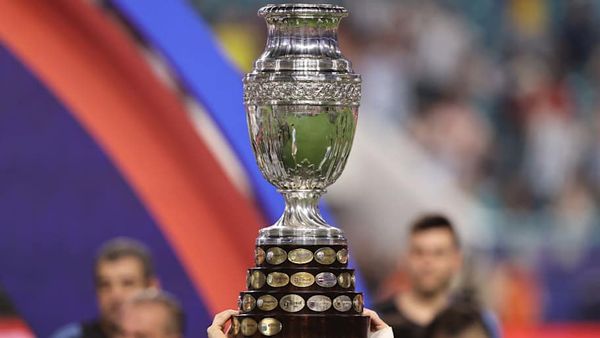
So you think Napoleon was short? Well, it’s a myth. Britain’s great satirist James Gillray didn’t just caricature the French leader relentlessly, he also pulled off arguably the greatest cartoon coup of all time, convincing the world even to this day that he was pint-sized. It was all based on a mistranslation (and no doubt a little mischief). Since French inches were bigger than British ones, Napoleon’s recorded height of 5ft 2in would have worked out at around 5ft 7in on the other side of the Channel. Not a giant, but taller than the average Frenchman of the time.

The epic story of the Corsican soldier who rose to dominate Europe and then suffered a shocking downfall, only to return briefly before finally meeting his Waterloo, is now one of autumn’s big films. Ridley Scott has already been taunting historians who have criticised his Napoleon for factual inaccuracies. But how have other artists portrayed this colossal figure? In cinema alone, the leader’s extraordinary life story is a venerable theme. Can Scott and his star Joaquin Phoenix lay to rest the ghost of Abel Gance’s so-far-unsurpassed 1927 silent Napoléon? And have they lifted the curse that blighted Stanley Kubrick’s unfinished Napoleon project?
Whatever the answer, there’s no doubt that, long before cinema, Napoleon inspired and disturbed artists who met him and had the chance to observe him. Scott has compared Napoleon with Hitler and Stalin, angering those who believe the French Emperor to be an idealist, a hero of modern Europe. So what did he look like to those artists who got to see him at close quarters in his own lifetime?
Napoleon dominated the art of the Romantic age. From the 1790s to the 1820s and even beyond, he inspired everything from JMW Turner’s tempestuous canvas Snow Storm: Hannibal and His Army Crossing the Alps to, well, potties that let you pee on his face. Francisco Goya recorded the atrocities he unleashed in gory paintings that still haunt to this day. More indirectly, you could argue that every work of art and literature of the era was about Napoleon in some way or other, even Jane Austen’s comic novels, such was the shadow this conqueror cast.

Yet the most acutely informative Napoleonic artists were the ones the Corsican himself employed. It’s tempting to call French painters who were in the service of his empire-building propagandists: obviously, they were expected to promote his myth. Yet this was a great artistic age, especially in France, and the painters who got closest saw Napoleon in a way that went deeper than pomp and image-making. Many uncovered something much more complex and bizarre.
Eight years before Napoleon Bonaparte crowned himself Emperor of the French, a young artist called Antoine-Jean Gros followed the upcoming military star to Italy, got an introduction, and personally witnessed him in action on the battlefield at Arcole. This inspired Bonaparte at the Pont d’Arcole, a passionate image of a long-haired hero completely at ease, waving a flag, brandishing a sword and sporting a blood-red sash around his waist. With his face strikingly aglow amid the darkness all around, he is the very embodiment of bravery as he leads from the front into the heart of battle. This was, after all, the Romantic age – and Gros sees Napoleon as its ultimate icon.
One decade later, Gros’s belief in his hero seems to have faltered. His giant painting Napoleon on the Battlefield at Eylau shows a far more subdued and melancholy leader. Napoleon sits pallid-faced on his horse in a frozen landscape dotted with bodies lying heaped in the snow. But even here, where the Russian army was defeated at a brutal price, Gros seeks out Napoleon’s personal magic. The Emperor of the French, as he now was, reaches out his hand mystically, gazing at a truth no one else can see. Broken soldiers kneel at the fetlocks of his horse as if the man it bore was Christ in a bicorne hat.
The Battle of Eylau in East Prussia marked the moment when the conquests of Napoleon started to sink into a mire of bloodied snow and chaos. If he really is having a vision, perhaps it is a foreboding of the disasters to come. In 1812, he would lead an army of 650,000 into Russia. Fewer than 100,000 would return.

Gros was the pupil of Jacques-Louis David, who also painted Napoleon, but he looked at him with the eyes of a revolutionary veteran. The result is cooler and more analytical. David was the star of the neoclassical movement in 18th-century France, a stern painter of historic scenes whose depictions of ancient Rome were like a call for a new moral patriotism. In The Oath of the Horatii – painted in 1784/5, about five years before the French Revolution – young soldiers pledge themselves to violent struggle, arms raised in salute to a bunch of swords held aloft. When revolution broke out, David joined the extreme Jacobin faction and voted for the execution of the king and queen. His sketch of Marie Antoinette on her way to the guillotine is pitiless.
So by the time Napoleon rose to power, David had seen a lot. As had Europe. In 1792, France declared war on the “feudal” enemies that threatened it, initially Austria and Prussia, believing itself the beacon of a new liberal world. Napoleon was not the cause but the product of the continent-wide conflict that ensued: a talented soldier born in 1769, he made war his career from the age of 15. As the conflicts dragged on, his brilliant tactics made him increasingly indispensable until, as the century drew to a close, he became dictator of France in a coup.

Napoleon Crossing the Alps, David’s most famous painting, tries to identify, and preserve for eternity, the qualities that made the Corsican such a brilliant commander. David depicts Napoleon during one of his most stunning victories, when he personally led an army through the Great St Bernard Pass to relieve his forces in Italy. The speed and fury are palpable as Napoleon’s horse rears up on a mountain ledge, its eye glistening with fear. But its rider’s hand points forward, a heroic movement echoed in the curls of the horse’s mane and tail – and again in the blanket swirling around Napoleon’s body, and in the hair spilling forth from, as ever, his bicorne hat (one of his collection of 120).
Napoleon shows no dread as he stares at you with unnerving determination, commanding even on canvas. This is not the sympathetic figure painted at Arcole. David may be delivering the ultimate propaganda image of Napoleon but he doesn’t share Gros’s love for the man. Instead of poetry, we have a dissection of Napoleon’s power, which David sees as based on an iron resolve and electrifying self-belief: his eyes are the one fixed point in this maelstrom of a painting, cold, calm and calculating in the heat of battle.
David is even more dispassionate in his nearly 10-metre-wide canvas The Coronation of Napoleon. This document of Napoleon’s ascent to the self-created title of Emperor of the French is a surreally meticulous panorama of kitsch pageantry on a colossal scale. “One can walk through it!” Napoleon is supposed to have enthused. David puts you right there inside Notre Dame Cathedral as the pale, newly crowned ruler prepares to place another crown on his wife Josephine’s head. The assembled clergy look on helplessly: Napoleon doesn’t need their sanction.
The face of the Emperor, who has co-opted all this ancien régime nonsense of mitred bishops and liveried guards, is pensive. He’s not a god. He’s just a man in a crowd, with nothing to single him out from the rest of the attendees, no army marching behind a heroic horseman. David appears to be asking: is this what the Revolution was for? You sense something akin to the rage of Beethoven on hearing Napoleon had made himself emperor: “So he is no more than a common mortal! Now he, too, will tread underfoot all the rights of man.”

Napoleon had been a hero to idealistic Europeans who hoped the human rights championed by the French Revolution would spread to their countries. It was easy for Beethoven to strike out the name of this false idol from his Third Symphony, to whom it had previously been dedicated. But French artists commissioned to portray this increasingly perplexing figure had to look him in the eye squaring conscience with career.
When Jean-Auguste-Dominique Ingres portrayed the emperor, he saw little but ice. His waxwork of a painting is a miracle of chilly precision. Dressed in robes that are more medieval in flavour, and holding the sceptre of Charlemagne, Napoleon stares directly at the viewer, seeming almost divine – but less than human. Ingres twists flattery into terrible truth. Semi-sneering in a crown of golden laurels, this Napoleon seems incapable of feeling.

The sculptor Canova does something similar in his nude colossus. Somewhat paradoxically, this marble statue, commissioned by the emperor, depicts the great warmonger as Mars the Peacemaker. But its gigantism is disturbing, its nudity corpselike. After the Battle of Waterloo, it was given as booty to the Duke of Wellington and it can still be seen in his London home, Apsley House. It makes much more sense as a satire for British eyes: who could take this heroically idealised giant seriously? Not even Napoleon. He had rejected it in 1811, calling it “too athletic”.
Even in the eyes of his official artists, it seems that Napoleon was a disappointment. He started out seeming to offer a big, optimistic vision, exporting the best of the Revolution and championing art and science throughout a united Europe, yet ended up looking like a selfish egotist sacrificing hundreds of thousands of lives on the battlefield to his insatiable ambition.
JMW Turner certainly thinks so. His painting War. The Exile and the Rock Limpet cuts Napoleon down to size. In contrast to Canova’s colossus, this Napoleon is just a little man on a beach under a molten sky, staring at his own reflection in a rock pool, wondering what might have been. A redcoated British soldier stands guard. Turner is showing Napoleon on the remote Atlantic island of St Helena, where he lived out the rest of his life in captivity after that final defeat at Waterloo.
This painting was unveiled in 1842, 21 years after Napoleon’s demise. Far from gloating, Turner sees in Napoleon’s shrunken figure metaphors for the sweep, scale and sadness of history, the endless cycle of empire and war, the ultimate smallness of the individual who believed he could control it. At the Battle of the Pyramids, Napoleon told his army: “From the heights of these pyramids, 40 centuries look down on us.” Perhaps, in this masterful work by Turner, this fallen conqueror might finally have recognised himself.
• This article was amended on 23 November 2023 to correct the caption of the second image. Napoleon Bonaparte at the Pont d’Arcole was painted by Antoine-Jean Gros in 1796, not “c1754” as an earlier version said.







